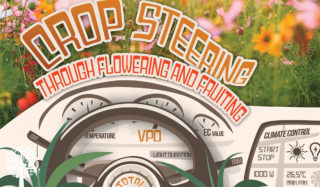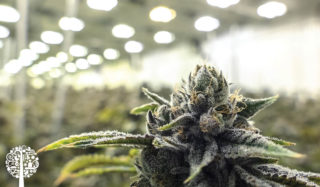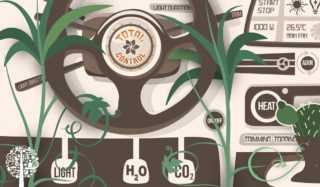Using Climate And Irrigation As Crop Steering Tools Through Flowering And Fruiting %

When using climate and irrigation as tools, crop steering can be applied to plants at every growth stage, from cuttings and seedlings to fruit and flower production.
People often ask me for my recommended recipe for managing irrigation, climate, and nutrients. Growers are often understandably disappointed with my reply: it depends! It all comes back to the foundations of precision growing; everything revolves around the cultivar growing, where it came from, and how it was bred. The local climate, light intensity, air movement, humidity and temperature levels all come into play. And finally, the root zone, the size, composition and type of the growing media, its water-holding capabilities and the irrigation system used also matter. The interaction of all these factors and how you physically prune your crops will influence how you steer your plants.

Cannabis Flower
Generative vs. Vegetative
While working with hundreds of growers over the last few years, I’ve seen many different approaches. Most commonly, I see growers steer toward the generative side throughout the plant’s lifecycle, irrigating heavily but infrequently. While this method produces some potent, high-quality flowers, it is challenging to reproduce results, maximize yields, and does not efficiently use water, nutrients, or substrate. In addition, you can do irreparable damage if the plant dries down too much too early. Some cultivars have an extreme drought tolerance and, depending on the environmental conditions, will not exhibit signs of being too dry until it is too late. Growers often turn to root zone sensors to help boost yields and quality.
Growers are rarely completely vegetative throughout the lifecycle of their plants, at least not intentionally. Using only a vegetative irrigation strategy can negatively impact yield and quality. The flower takes longer to develop and may also lack resin, potency, and bag appeal. However, being vegetative in the flowering stage can benefit plant health and increase yields by bulking up the flowers.
A Combo Platter
A combination of generative and vegetative steering throughout the flowering stage offers excellent results. Growers will go back and forth between generative and vegetative steering to keep the plant healthy and balanced until harvest. I’ve seen growers making this change weekly. Others have discovered through experience the best moments to switch from generative growth to set flowers and create tighter inter-nodal spacing before going back to vegetative growth to bulk the flowers, and then back to generative again to finish the crop. The result is increased yields and potency in a shorter timeframe with less water and nutrient usage. The challenge is that not all plants react the same way, and every farm environment is different. It takes time and crop measurement to determine exactly what your plants need.
Make gradual changes over several days when applying crop steering to your garden. Changing too many things at once means you may not know what worked and what didn’t. Also, tweaking the irrigation and climate too quickly can shock your plants and make it difficult for them to recover.
Keep a Journal
Recording what went well and what didn’t for a crop is essential. Growing is challenging; it is nearly impossible to remember everything that happened over the many months it took to grow the plant. The historical data of the climate and rootzone is a game-changer for many growers. Good note-taking means you can see how various strategies and nutrient types or concentrations influenced the health and final yield of the crop.





